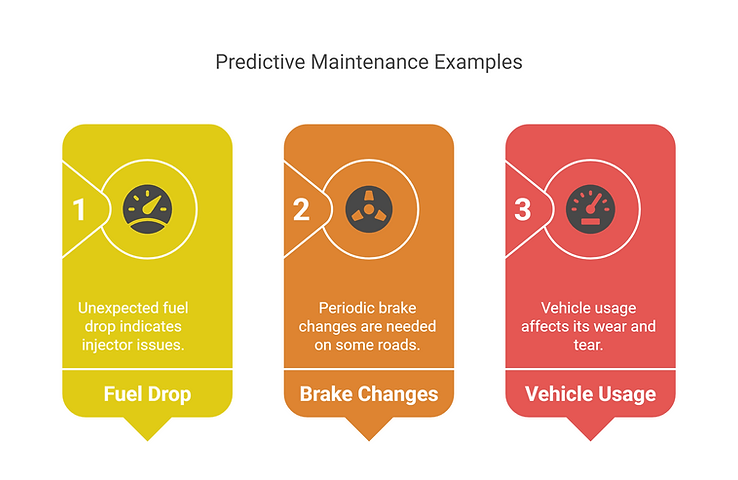Operating a mixed fleet, such as light-duty pickups, delivery vans, or heavy-duty trucks, is extremely difficult. Various vehicles require different kinds of maintenance, and outdated service schedules are no longer sufficient.
The game-changer? Technologies on board like telematics, GPS, and diagnostic systems. They allow fleet managers to shift from fixing issues once they occur to preventing them from occurring in the first place, reducing downtime and improving performance.
Real-Time Health Monitoring Keeps Vehicles Road-Ready
Telematics systems provide you with real-time data on the condition of your vehicles. Managers can detect faults beforehand, not after a breakdown or after hearing from a driver. They keep track of:
- Engine condition, oil pressure, and coolant level
- Battery charge trends and voltage
- Brake wear and ABS performance
- Diesel exhaust aftertreatment (DEF) concerns
- Tire pressure and alignment (with TPMS)
With this data, you can get ready for service before a minor problem grows to be a huge delay. 83% of fleet operators in the U.S. use telematics systems, with 41% seeing a positive return on investment within a year.
This prevents repair expenditures and maximizes uptime for any kind of vehicle.

GPS and Route Planning for Improved Service Scheduling
GPS tracking isn’t just about knowing where your vehicles are, but about being able to use that information to make smarter plans.
- Prioritize servicing vehicles close to maintenance centers
- Use route history to calculate the best service windows
- Plan mobile maintenance visits to low-access or remote areas
This openness enables you to plan preventive fleet maintenance without interfering with everyday operations, particularly for vehicles whose routes are non-routine or irregular.
Fault Code Tracking Simplifies Engine Diagnosis
Engines today generate many fault codes, especially in Class 8 and diesel machines. Telematics systems will automatically track and classify these codes, so your crew will be aware of what the problem is.
- DEF system warns before warning lights.
- Early signs of pickup transmission troubles
- Loaded diagnostic information to enable quicker shop repairs.
By being aware of the problem beforehand, you can pre-order components and save time on diagnosis, keeping your vehicles running longer.

Driver behavior intelligence helps minimize damage and strain
How a car is driven is important. Driver behavior that influences maintenance requirements is tracked by onboard systems, including:
- Abrupt stops or rapid acceleration
- Long idling periods
- Speeding and over-revving
- Poor shifting techniques
When you observe these habits, you can correct them through coaching or route changes. This will minimize wear on brakes, tires, and engines and save money on additional service.
Predictive Maintenance Powered by Data
The greatest advantage of onboard technology is the shift to predictive maintenance. With real-time data, historical repair information, and usage patterns, you can anticipate future issues.
For instance:
- An unexpected fuel drop indicates injector issues
- Periodic brake changes on some roads
- The usage of a vehicle affects its wear and tear.
Predictive insights enable you to create more effective service plans to address each vehicle’s purpose and work, which is crucial in a mixed fleet environment.

Final Thoughts
For mixed fleet operators, on-board technologies are not a luxury, they are a requirement for contemporary maintenance. Technologies like real-time diagnostics, GPS, driver analytics, and predictive planning help you reduce downtime, lower repair costs, and keep your whole fleet in good health.
Would you like to include these tools in your inventory?
Kooner Fleet Management Solutions is ready to assist you in assessing, implementing, and managing telematics and on-board systems that are suited to your heterogeneous fleet’s special requirements. Drive smarter, together.